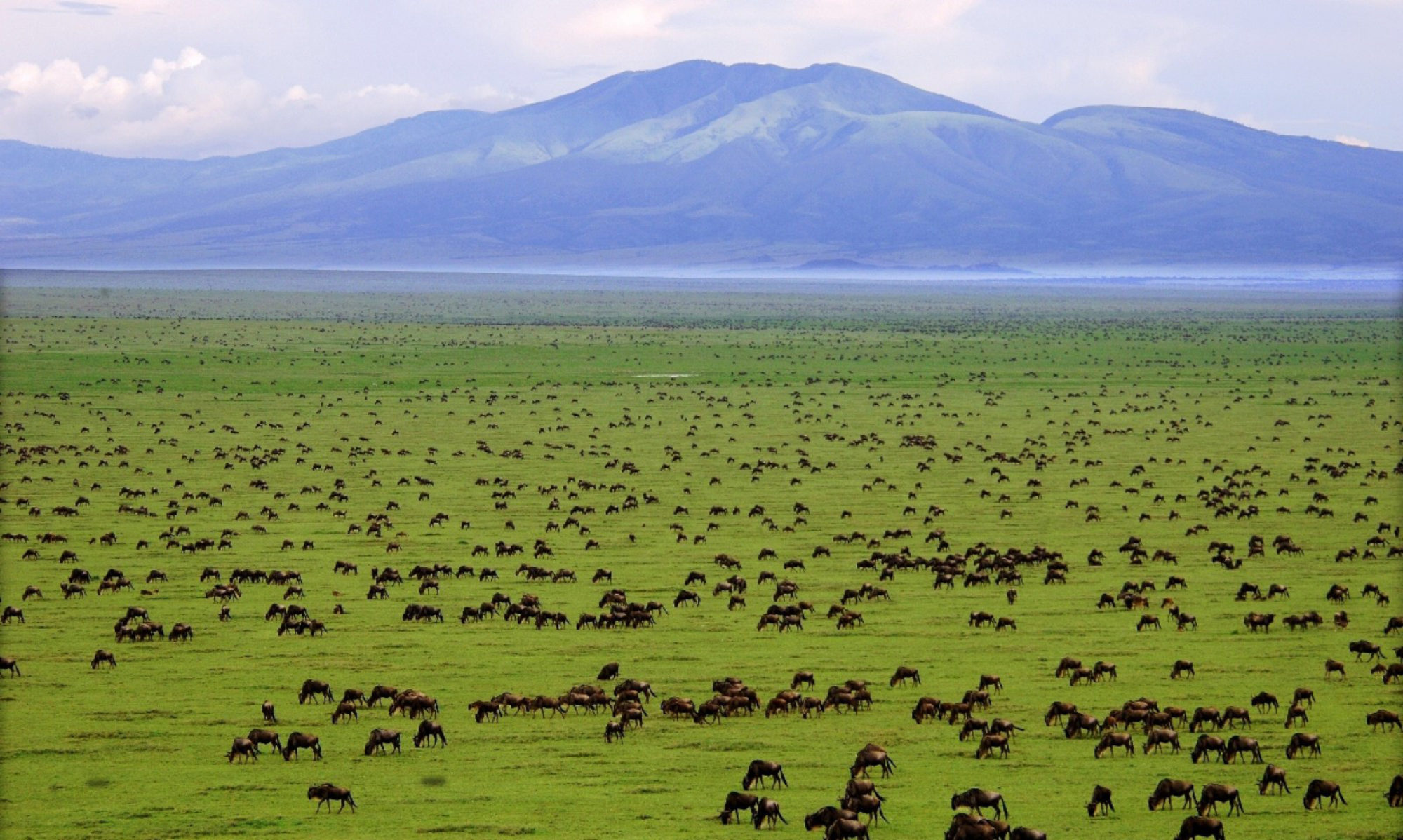Wondering what there is to do on a Tanzania vacation? Even if you’re just starting your search, there’s little doubt that you’ve heard some of the names and places on this list. Tanzania is home to some of the most iconic destinations in all of Africa and the world. We couldn’t possibly list all the things to do and see in Tanzania here, but as a beginner’s guide, here are some of the things you should try to get to, here are some of things you can have to whet your appetite for this amazing vacation experience:
Safari and Wildlife
- Serengeti National Park—The Serengeti can refer to both Tanzania’s national park as well as the larger surrounding ecosystem. A big part of what makes this area so famous is the Great Migration in which over 1.5 million wildebeest, as well as plentiful zebra, crocodiles, honey badgers, and other animals. More than just migratory species, you can also find lions, leopards, cheetahs, rhinoceros, buffalo, and elephants in one of the most diverse and remarkable ecosystems in the world.
- Tarangire National Park—You can find almost all of Africa’s wildlife in this one spot, especially during the dry season. That’s because the Tarangire River serves as a fresh water source for many types of wildlife. From June to November, you can find plenty of zebra, wildebeest, and buffalo, to go along with the elephants that love this spot year-round. The park is also home to more than 550 species of birds.
- Ruaha National Park—This is the largest national park in Tanzania and all of East Africa. Along with several interior and adjoining game reserves, this park is almost 8,000 square miles. Like the Serengeti, the park is part of the larger Rungwa-Kizigo-Muhesi ecosystem. This park is also home to pretty much all of Africa’s famous safari wildlife. May through December is usually best for seeing large animals and predators. January through April is best for birds and flowers.
- Selous Game Reserve—This is one of largest fauna reserves in the world. Designated a UNESCO World Heritage Site in 1982, much of the land is set aside for big-game hunting, and it’s a world-class spot if that’s your thing. If it’s not your thing, but you’re in this southern part of Tanzania, there’s a section in the northern part of the reserve that’s just for photography and sightseeing.
Mountains and Volcanoes
- Mount Kilimanjaro—Known as Kili to many of the locals, Mount Kilimanjaro is the tallest peak in Africa. More than a mountain, Kilimanjaro is a dormant volcano with three volcanic cones: Kibo, Mawenzi, and Shira. There are five commonly used climbing routes that reduce down to two paths to the summit. About half of the climbers who attempt the climb fail to reach the summit, but even if you’re not a hardcore climber, there are amazing views from a distance as well.
- Mount Meru—You don’t need to be Hindu or Buddhist to appreciate the sacred vibe that’s given off by this mountaintop and its five peaks. Members of many religious faiths have a special meaning and connection to this place, sometimes considered the center of the universe. Maybe you’re a religions buff or maybe you’re intrigued by the natural phenomenon with such immense religious influence.
- Ngorongoro Crater and Conservation Area—Along with the breath-taking experience that is the largest unbroken caldera in the world, there’s also a beautiful gorge and other natural features in the surrounding landscape. There’s a ton of wildlife in this protected area. This includes lions, rhinoceros, zebra, wildebeest, and hyenas.
- Ol Doinyo Lengai—Tanzania also has active volcanoes. Ol Doinyo Lengai, The Mountain of God, is undoubtedly the country’s most famous. Part of the East African Rift, this volcano produces a particular kind of natrocarbonatite lava. It’s also important in the history of science. Its 1960 eruption gave scientists the opportunity to confirm that carbonatite rock comes from magma.
Famous Lakes
- Lake Victoria—The greatest of Africa’s Great Lakes, Victoria is the world’s largest tropical lake, the second largest fresh water lake by surface area, and the world’s 9th largest continental lake. Wildlife, the Nalubaale Dam, and lake recreation make this a popular spot. It was once mistaken as the source of the Nile.
- Lake Manyara National Park—Lake Manyara is a great example of how much the dry and wet seasons affect the Tanzanian landscape. During the wet season, the lake can swell to more than 7 square miles. During the dry season, it shrinks to a size that most people find it hard to believe it’s a lake at all. More than the lake itself, the park is largely defined by the strip of land between the lake and the rock wall that is the Gregory Rift. Along with other safari wildlife, the lake is known for its indigenous flamingos.
- Lake Tanganyika—Another one of Africa’s Great Lakes, it tends to play the role of understudy to Russia’s Lake Baikal. Lake Tanganyika is the second largest by volume, the second deepest, and the second oldest freshwater lake in the world. The longest lake in the world, it actually borders three other countries (Congo, Burundi, and Zambia). With significance for geological and human history, not to mention a huge amount biological diversity, it’s a great spot for lake-lovers.
